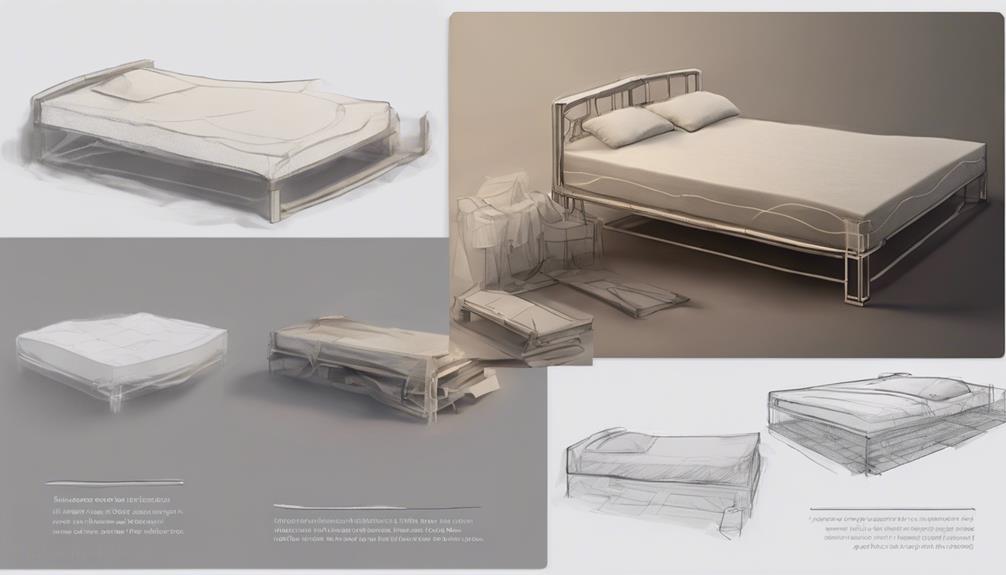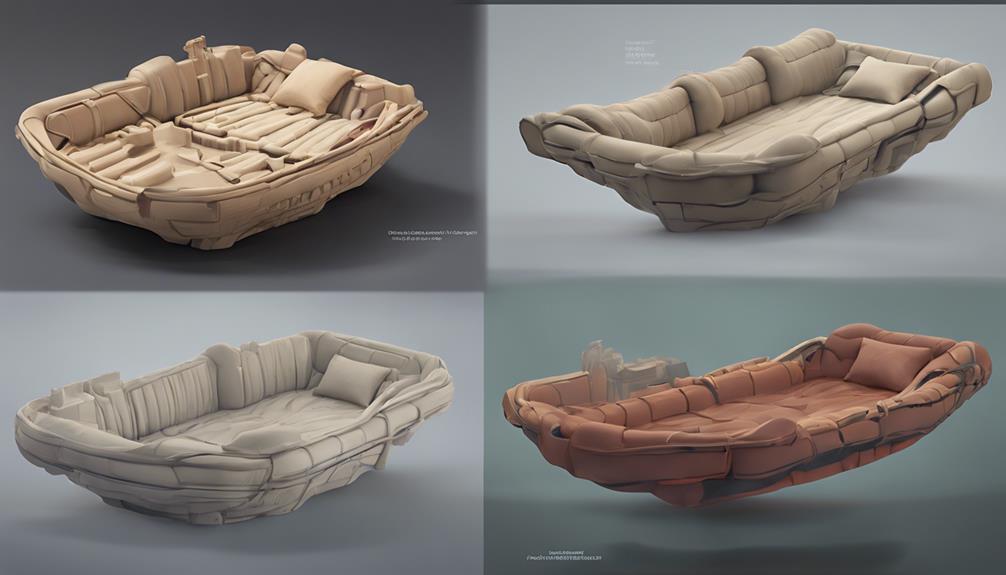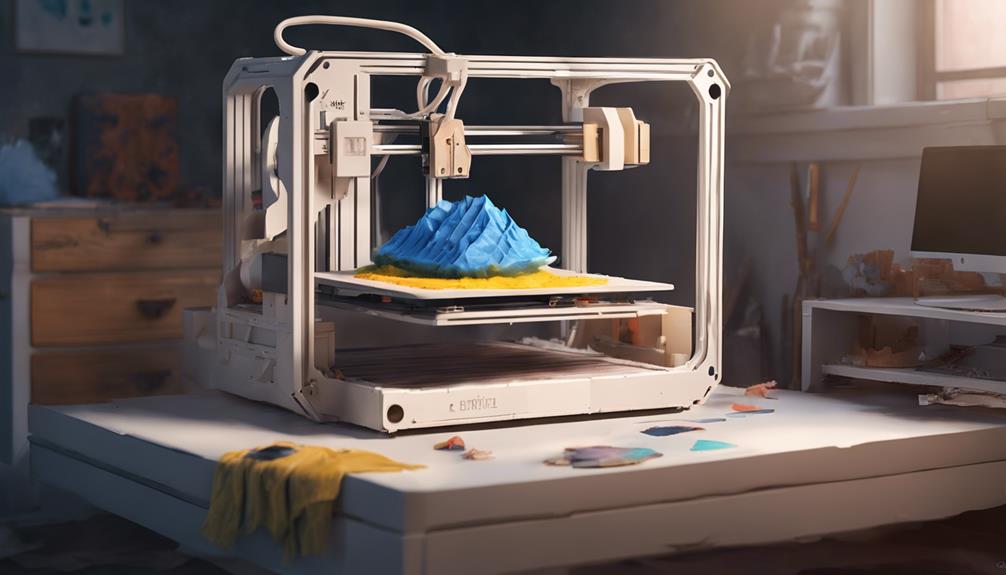Understanding the nuances of bed adhesion is crucial in the world of 3D printing, as it can make or break the quality of your prints. The initial layers set the foundation for the entire object, and a lackluster adhesion can lead to warping, shifting, or even failed prints. But what if there was a way to guarantee flawless adhesion every time, without the headache of trial and error? Stay tuned as we reveal expert insights and techniques that can elevate your prints to perfection by mastering the art of bed adhesion.
Bed Leveling Techniques

Proper bed leveling is essential for ensuring consistent nozzle distance and improving first layer adhesion in 3D printing. Whether manually leveling using paper or a feeler gauge, or utilizing automatic bed leveling features, achieving a flat and even printing surface is critical for successful prints, particularly on popular printers like the Ender 3.
Additionally, regular cleaning of the print bed is important to prevent adhesion issues caused by dust, particles, and finger grease. Utilizing Isopropyl alcohol and a cloth for cleaning, recommended every 5-10 prints, helps maintain a clean surface for optimal adhesion.
Bed Temperature Optimization
To guarantee successful 3D prints and optimize bed adhesion, understanding the impact of bed temperature is paramount in achieving high-quality results. Bed temperature plays a pivotal role in filament adhesion forces, affecting print quality.
Adjusting the bed temperature slightly above the filament's glass transformation temperature is recommended to minimize warping and detachment issues. Different filaments require specific bed temperatures for best adhesion. Experimenting with temperatures can help in finding the ideal settings for each filament type.
Proper bed temperature not only enhances adhesion but also contributes to successful print outcomes by ensuring the first layer sticks securely. By fine-tuning bed temperatures according to filament requirements, users can improve adhesion and minimize print failures.
Advanced Adhesion Strategies

Exploring innovative methods to enhance bed adhesion in 3D printing involves utilizing advanced adhesion strategies that go beyond traditional techniques.
One such approach is using adhesive materials like glue sticks or hairspray to create an extra layer of adhesion between the print and the build surface. This method can be particularly useful when dealing with challenging filaments that struggle to stick.
Additionally, incorporating a heated build plate can help improve adhesion by keeping the first few layers of the print warm and malleable, allowing them to bond securely to the surface.
Advanced adhesion strategies aim to address specific challenges faced during printing, providing solutions for achieving high-quality prints with strong bed adhesion.
Adhesion Enhancements With Brim/Raft
What methods can be employed to enhance adhesion in 3D printing through the use of Brim/Raft techniques? Utilizing a brim or raft can greatly improve bed adhesion by increasing the contact surface area for better adhesion and providing a base for model printing. While a raft offers a complete base, a brim is preferred due to easier removal. Understanding the differences between Skirt, Brim, and Raft is important for best results. Below is a table summarizing these techniques:
| Technique | Description | Advantages |
|---|---|---|
| Skirt | Single outline around the print | Helps prime the extruder |
| Brim | Several outlines around the print base | Enhances adhesion |
| Raft | Thick layer under the entire model | Provides strong base for print |
These techniques play an important role in ensuring successful adhesion for your 3D prints.
Final Tips and Recommendations

Implementing a structured maintenance routine is essential for optimizing bed adhesion and ensuring successful 3D prints. Regularly checking and adjusting the bed level, cleaning the bed surface with Isopropyl alcohol to remove dust and grease, and setting the bed temperature slightly above the filament's glass shift temperature are vital steps.
Adding a brim to your prints can greatly enhance adhesion by increasing the contact surface area. Additionally, applying a thin layer of glue stick or hairspray can provide extra adhesion support.
For materials like ABS or ASA, using an enclosure can help maintain a stable print environment. Following these final tips and recommendations will contribute to achieving high-quality, well-adhered 3D prints consistently.
Frequently Asked Questions
How Can I Tell if My Bed Is Leveled Correctly Without Using a Paper or Feeler Gauge?
To determine bed leveling without paper or a feeler gauge, utilize the "paper drag" method. Gently move a sheet of paper under the nozzle while adjusting the bed. When the paper moves with slight resistance, the bed is adequately leveled.
Is It Necessary to Adjust Bed Temperature for Different Types of Filaments, or Can I Use a Universal Setting?
Adjusting bed temperature for different filaments is important. Using a universal setting may result in poor adhesion, warping, or detachment. Tailoring bed temperature slightly above each filament's glass transformation point guarantees ideal adhesion, reducing print failures.
What Alternative Methods Can Be Used to Enhance Bed Adhesion Besides Turning off the Fan for the First Layers?
Alternative methods to enhance bed adhesion beyond disabling the fan include using a brim or raft to increase contact area, applying glue stick or hairspray for additional grip, and ensuring proper bed leveling and temperature slightly above the filament's glass shifting temperature.
Are There Any Downsides to Using a Raft Instead of a Brim for Bed Adhesion?
While rafts provide a sturdy foundation for prints, they can increase print time and material usage compared to brims. Rafts may require more post-processing due to their thicker nature. Understanding each method's pros and cons is essential.
Can I Apply Additional Adhesion Methods Like Glue Stick or Hairspray on Top of Using a Brim for Better Results?
Applying additional adhesion methods like glue stick or hairspray on top of using a brim can enhance bed adhesion. These products create an extra layer of adhesion, especially useful for challenging prints or when seeking increased adhesion reliability.
Conclusion
To sum up, mastering bed adhesion is the cornerstone of achieving flawless 3D prints. Like a well-tuned orchestra, proper bed leveling, temperature optimization, and advanced adhesion techniques harmonize to create a symphony of perfect adhesion forces.
Implementing strategies such as brim or raft further enrich the print quality, ensuring a smooth and seamless printing experience. By fine-tuning these elements like a skilled artisan, one can sculpt masterpieces with precision and grace.